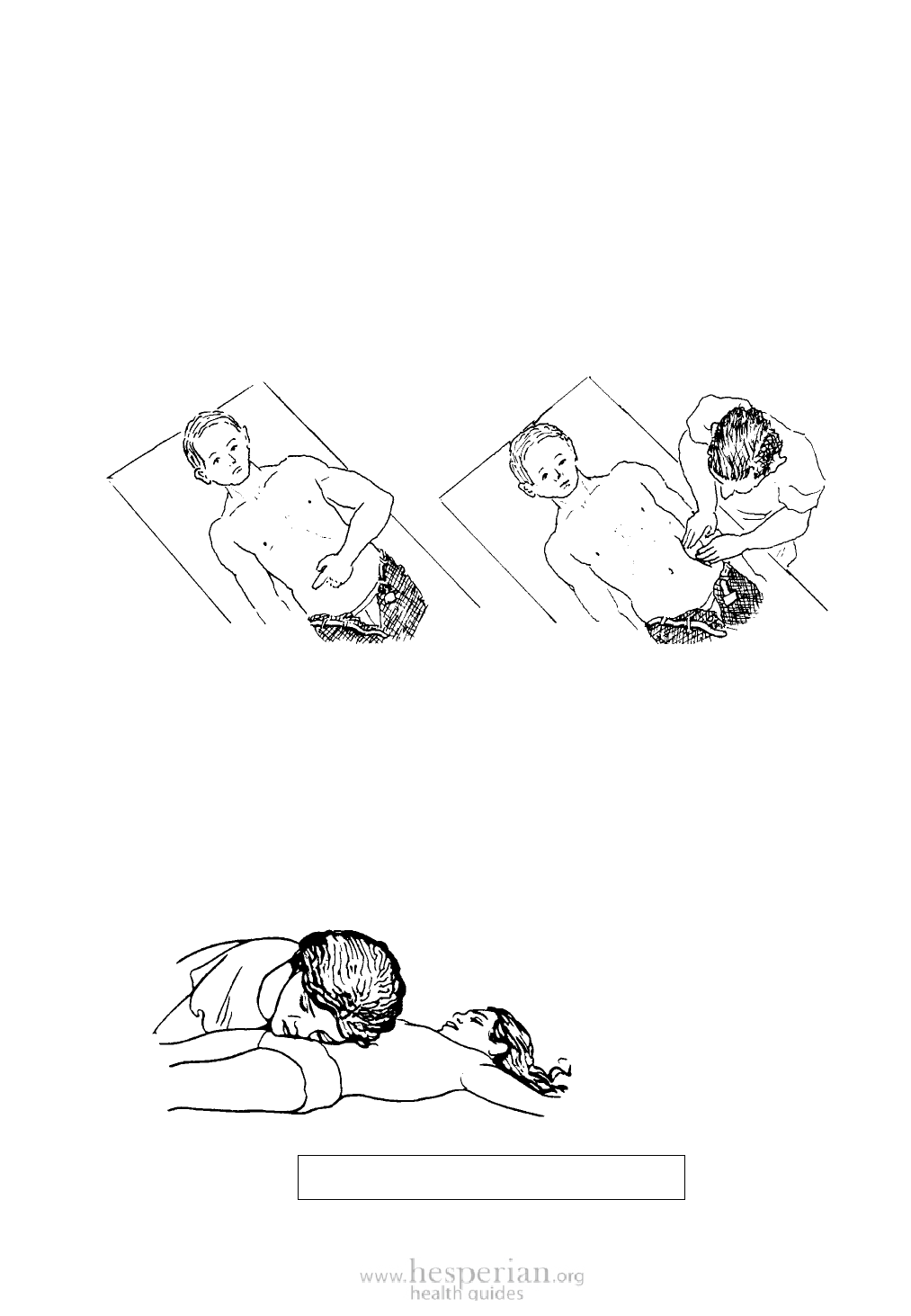
Where There Is No Doctor 2011 35
THE BELLY (ABDOMEN)
If a person has pain in the belly, try to find out exactly where it hurts.
Learn whether the pain is steady or whether it suddenly comes and goes, like
cramps or colic.
When you examine the belly, first look at it for any unusual swelling or lumps.
The location of the pain often gives a clue to the cause (see the following page).
First, ask the person to
point with one finger
where it hurts.
Then, beginning on the opposite side from the spot
where he has pointed, press gently on different
parts of the belly to see where it hurts most.
See if the belly is soft or hard and whether the person can relax his stomach
muscles. A very hard belly could mean an acute abdomen—perhaps appendicitis or
peritonitis (see p. 94).
If you suspect peritonitis or appendicitis, do the test for rebound pain described
on page 95.
Feel for any abnormal lumps and hardened areas in the belly.
If the person has a constant pain in the stomach, with nausea, and has not been
able to move her bowels, put an ear (or stethoscope) on the belly, like this:
Listen for gurgles in the
intestines. If you hear nothing
after about 2 minutes, this is a
danger sign. (See Emergency
Problems of the Gut, p. 93.)
A silent belly is like a silent dog. Beware!